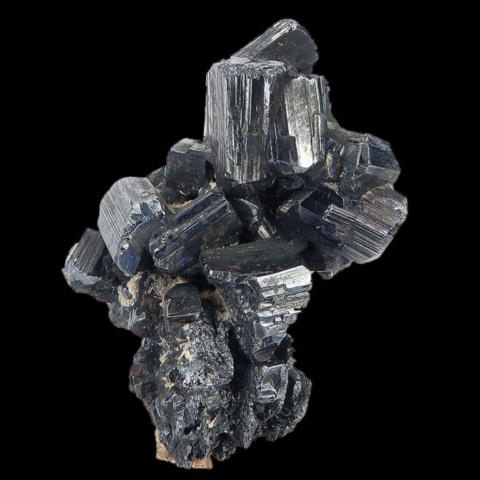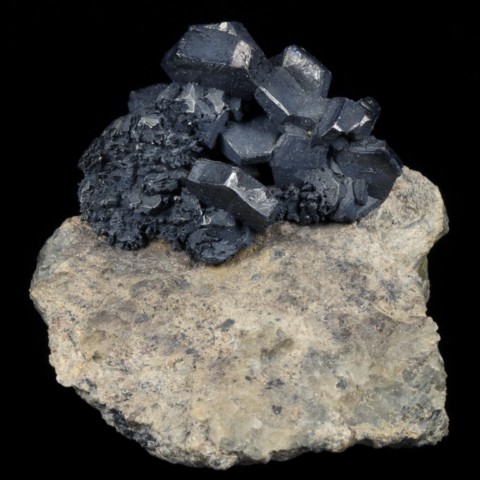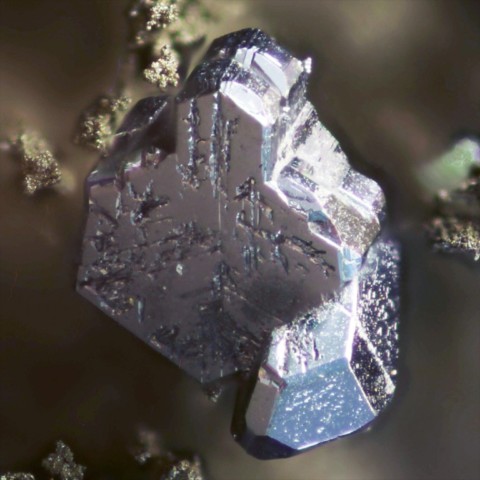STEPHANITE
Class : Sulfides and sulfosalts
Subclass : Sulfosalts
Crystal system : Orthorhombic
Chemistry : Ag5SbS4
Rarity : Uncommon
Stephanite is a late primary sulfide from silver and auro-silver hydrothermal deposits. It is common in most major silver mining districts (gold-silver, lead-zinc-silver, nickel-cobalt-silver veins, etc...). Depending on the type of vein, it is accompanied by different sulfides (sphalerite, galena, tetrahedrite, etc...), but constantly retains a procession of other silver sulfides and sulfosalts with which it is mixed (polybasite, pearceite, acanthite, etc...). It was named in honour of Archduke Victor Stephan, Director of Mines of Austria. Stephanite has a metallic luster and an iron-black colour ; it constitutes tabular to prismatic crystals according to [001], pseudohexagonal, with striated faces parallel to the axis of elongation. Stephanite constitutes a silver ore generally accessory but essential in certain mines
Main photo : Stephanite from St. Andreasberg, Germany © Heritage Auctions
Stephanite in the World
Twinning
Twinning is known on {110}; less common on {130}, {100} and {010}.
Fakes and treatments
No fakes listed for this mineral species.
Hardness : 2 to 2.5
Density : 6.26
Fracture : Sub-conchoidal
Streak : Black
TP : Opaque
RI : -
Birefringence : -
Optical character : -
Pleochroism : None
Fluorescence : None
Solubility : Nitric acid
Magnetism : NoneRadioactivity : None





